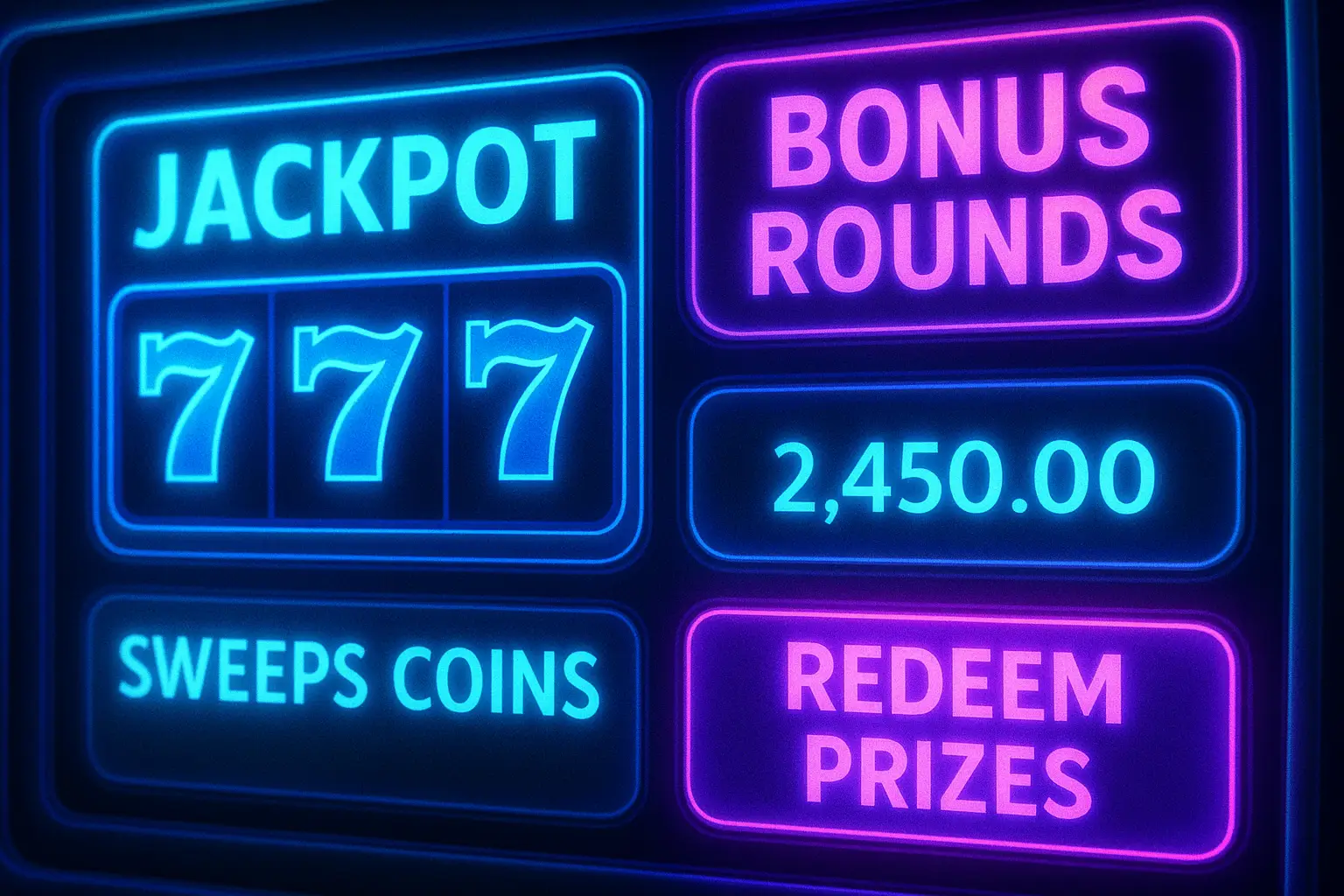Sweepstakes Casino Strategies: How to Maximize Your Gameplay and Bankroll
Sweepstakes casinos have quickly become one of the most popular alternatives to traditional online casinos. Designed for players who want to enjoy casino style games without betting real money or violating strict gambling laws, sweepstakes casinos offer a unique online gaming experience powered by virtual currencies. Sweepstakes casinos offer sweepstakes games that use virtual currency instead of real money, providing a risk-free way to play. Instead of staking actual currency, players use gold coins or sweeps coins to play games and potentially win prizes, including real cash prizes, digital gift cards, or other rewards through prize redemption systems, with compliance and fair reward systems involving sweep coins being a key component of a trustworthy sweepstakes gaming experience.
Most sweepstakes casinos operate under a dual-currency model, allowing users to enjoy casino games for fun using gold coins or compete for real prizes with sweeps coins. Sweepstakes casinos use sweep coins (also known as sweepstakes coins) as a promotional virtual currency that can be earned through bonuses and promotions, not purchased directly. Sweepstakes coins are used to play sweepstakes games for a chance to win real cash or prizes. From slot games and card games to jackpot games and other gaming experiences powered by providers like Pragmatic Play, the options are vast and varied. However, succeeding in this environment requires more than just luck. Whether you’re entering games casually or aiming for consistent returns, you need actionable sweepstakes casino strategies that will help you enjoy gaming while minimizing financial risk and maximizing your sweeps coin balance.
This guide breaks down the most effective game strategies, bankroll management techniques, and bonus utilization methods to help you get the most out of every sweepstakes site.

Understanding Sweepstakes Casino Mechanism
The mechanism behind sweepstakes casinos is designed to deliver a fair, secure, and thrilling gaming experience. Players can acquire virtual coins—like gold coins—to play games and participate in sweepstakes-style prize draws. These virtual coins can be earned through regular gameplay, purchased directly, or collected via social media promotions and special bonuses.
To ensure fairness, sweepstakes casinos use a random number generator (RNG) for all their games, guaranteeing that every outcome is random and unbiased. When players win, the prize redemption process is straightforward: simply follow the platform’s guidelines to redeem prizes, which can include cash prizes, digital gift cards, or other real prizes. Understanding how sweepstakes casinos work—from acquiring virtual coins to the redemption process—empowers players to make the most of their gaming experience and maximize their chances of winning exciting rewards.
Choosing the Right Online Casino
Selecting the right sweepstakes casino is key to enjoying a rewarding and hassle-free gaming experience. Start by looking for sweepstakes casinos that offer a broad selection of games, including slots, card games, and jackpot games. A user-friendly interface, secure payment options, and responsive customer support are also essential for a smooth online casino experience.
Before you start playing, check the casino’s reputation by reading player reviews and looking for certifications from reputable gaming authorities. Well-known sweepstakes casinos like Wow Vegas and Stake.us are popular choices, thanks to their wide range of games and generous bonuses. By doing your research and choosing a trusted sweepstakes casino, you’ll set yourself up for a fun, safe, and engaging gaming experience.
Best Strategies to Maximize Your Gameplay
Strategic play is essential for making the most out of every session at sweeps casinos. Here’s how to play smarter, stay longer, and increase your chances to win real prizes.
Use Gold Coins to Practice First
Gold coins are ideal for practicing game mechanics, trying out new games like playing slots or card games, and building a strategy before spending your valuable sweeps coins.
Why Practice with Gold Coins:
-
No financial risk involved
-
Test game selection and volatility
-
Learn in game rewards mechanics and bonus rounds
-
Improve timing and rhythm before staking sweeps coins
Best Practice Activities Using Gold Coins:
| Activity | Purpose |
|---|---|
| Try high-volatility games | Understand win frequency and payout style |
| Test new releases | See if newer games have favorable mechanics |
| Practice bonus rounds | Learn how and when features trigger |
| Study game odds | Track patterns across different games |
Focus on High-RTP Games
Game selection matters more than many casual gamers think. Sweepstakes casinos work with a wide range of titles that mirror those found in traditional casinos, often powered by random number generators.
What to Look for:
-
Return to Player (RTP) of 96% or higher
-
Medium volatility for balanced gameplay
-
Bonus rounds and in game rewards frequency
Popular Game Types with High RTP:
-
Classic slots
-
Low-stakes jackpot games
-
Card games like blackjack simulations
Play with a Goal, Not Emotion
In online gaming, especially in sweepstakes gaming environments, emotional decisions often lead to losing sweeps coins faster than intended. Define your objective before you enter games:
Examples of Smart Play Goals:
-
Double your sweeps coin balance, then pause
-
Redeem prizes once a certain threshold is met
-
Play until a set number of bonus rounds trigger
Avoid:
-
Chasing losses
-
Increasing stakes after a losing streak
-
Relying on luck without reviewing game strategies
Leverage Promotions Strategically
Most sweepstakes casinos offer regular promotions to retain and reward players. These include login bonuses, social media promotions, referral bonuses, and reload bonuses.
Top Promo Types to Use:
| Promotion Type | Frequency | Value |
|---|---|---|
| Daily bonuses | Every 24 hrs | Low to medium |
| Bonus sweeps coins | Weekly or monthly | High, if timed right |
| Social media giveaways | Random or campaign-based | Varies |
| Referral bonuses | Ongoing | Passive income style |
Tip: Follow sweepstakes casinos on social media platforms for flash events and time-limited codes.
Bankroll Management Techniques for Long-Term Play

One of the core differences between traditional gambling and sweepstakes casinos is how bankrolls are structured and sustained. Unlike traditional casinos that require direct cash wagers, sweeps casinos revolve around virtual currencies, including sweeps coins and gold coins. Effective bankroll management can extend your gameplay across weeks or even months.
Separate Your GC and SC Budgets
Always treat your gold coins and sweeps coins as two entirely different bankrolls. GC is for casual fun, testing games like new slots or card titles, while SC is your competition-level currency for real money prizes.
Budgeting Tips:
-
Set daily GC limits for testing
-
Cap weekly SC use based on total balance
-
Avoid converting GC habits into SC decisions
Example Budget Plan:
| Currency | Daily Limit | Weekly Cap | Use Case |
|---|---|---|---|
| Gold Coins | 5,000 GC | 35,000 GC | Practice and game testing |
| Sweeps Coins | 5 SC | 25 SC | Real prize competition |
Set Daily, Weekly, Monthly Limits
Discipline is essential in sweepstakes casino processes. Most sweepstakes casinos operate under a model that encourages frequent play but doesn’t require constant spending money. Still, it’s easy to lose track.
How to Structure Limits:
-
Daily: Set max number of games or SC used
-
Weekly: Define prize redemption goals
-
Monthly: Evaluate wins vs usage and adjust strategy
Tools to Help:
-
Use mobile notes or apps to track usage
-
Screenshot balance at session start and end
-
Plan logins around daily bonus times
Use Progressive Betting (Only with GC)
Progressive betting can be an effective way to simulate high-stakes strategies without risking real cash or sweeps coins. It allows you to test pacing and rhythm before betting real money.
Progressive GC Strategy:
-
Start at minimum bet
-
Increase after 2 consecutive wins
-
Reset after any loss
Avoid using this strategy with SC, as losing streaks can drain your real prize currency quickly.
Use Bonuses as Temporary Bankroll Extensions
Your login bonuses, initial purchase boosts, and reload bonuses act as soft currency infusions. Proper use of these can extend your playtime without adding financial risk.
Best Practice:
-
Use bonus sweeps coins only during planned sessions
-
Don’t treat bonuses as “free money” — they are a resource to be managed
-
Stack bonuses with promotional periods (like during sweepstakes site events or new game launches)
Advanced Strategic Insights

While casual gamers may treat sweepstakes casinos as just another form of entertainment, serious players understand the value of applying advanced strategy. These methods go beyond basic tips and rely on data, consistency, and precision.
Pattern Recognition vs RNG: What Actually Helps
One of the most misunderstood concepts in sweepstakes gaming is pattern recognition. Most sweepstakes casinos offer games powered by a random number generator, which means every spin or card draw is statistically independent.
What Works:
-
Tracking game odds over long sessions
-
Recording bonus rounds trigger frequency
-
Noting volatility patterns and swings
What Doesn’t Work:
-
Assuming streaks will continue
-
Believing in “due wins” or hot/cold cycles
-
Applying systems from traditional casinos blindly
Tracking Table Example:
| Game | Session Length | SC Used | Bonus Triggers | RTP Observed |
|---|---|---|---|---|
| Slot A | 30 min | 10 SC | 3 | 94% |
| Card Game B | 1 hr | 15 SC | 5 | 96.5% |
When to Cash Out and Reset
Prize redemption is one of the defining aspects of sweepstakes casinos. Knowing when to stop is key to long-term success.
Cash-Out Signals:
-
You’ve doubled your starting sweeps coin balance
-
You’ve triggered multiple high-value bonus rounds
-
You’ve hit a set goal (e.g., digital gift cards or real cash equivalent)
Reset Strategies:
-
Take a 24-hour break after reaching a goal
-
Log out immediately after a prize redemption
-
Switch games like slots to card games or vice versa
Adaptive Game Selection Over Time
Game selection should evolve with your experience. While new players should focus on low-volatility games, advanced users can transition to jackpot games or bonus-heavy titles.
Game Strategy Evolution Table:
| Player Type | Recommended Games | Goal |
|---|---|---|
| New | Low-volatility slots, basic card games | Learn mechanics |
| Intermediate | Mid-volatility, bonus-focused slots | Build bankroll |
| Advanced | Jackpot games, tournament entries | Maximize prize value |
Common Pitfalls to Avoid

Even experienced players can make mistakes that cost valuable sweeps coins. Awareness is your best defense.
Chasing Losses with Sweeps Coins
One of the worst habits in sweepstakes casino strategies is chasing losses. Unlike traditional gambling where you may stake cash, sweeps coins are limited and tied to prize value.
Avoid:
-
Increasing bet size after losses
-
Repeating sessions in frustration
-
Ignoring payout method timelines when planning redemptions
Burning Through Gold Coins Too Quickly
While gold coins don’t carry real money value, they are essential for practice and bonus triggers.
To Prevent Waste:
-
Use gold coins in structured sessions
-
Avoid autoplay or rapid spinning
-
Focus on high RTP games during GC play
Ignoring Game Volatility and House Edge
Every casino game, virtual or traditional, has a built-in house edge. Most sweepstakes casinos provide a game experience modeled after traditional online casinos, meaning volatility and edge play major roles.
Check Game Info For:
-
RTP %
-
Volatility level
-
Bonus frequency
Misusing Bonuses and Promotions
Promotions are valuable tools, but poorly timed usage can reduce their impact.
Mistakes to Avoid:
-
Claiming reload bonuses when balance is full
-
Missing time-sensitive social media giveaways
-
Wasting bonus sweeps coins on low-payout games
Better Usage Tips:
-
Combine login bonuses with low balance days
-
Use referral bonuses during new account pushes
-
Check social media platforms for limited-time sweepstakes coin drops
Final Strategy Tips for Smart Sweepstakes Players

Sweepstakes casinos offer far more than casual fun. With the right approach, players can convert virtual coins into real-world rewards and enjoy exciting wins while staying within legal and financial limits. These final tips are designed for players ready to elevate their sweepstakes casino strategies to the next level.
Think Long-Term, Not One Session
Every spin, hand, or bonus round contributes to your bigger picture. Unlike real money bets at traditional casinos, sweepstakes gaming rewards consistency and control.
Why It Works:
-
Most platforms are heavily regulated, encouraging fair play
-
Bonuses and promos reward long-term engagement
-
It reduces the temptation to chase big wins impulsively
Build Your Own Playbook
As you play across different sweepstakes casinos like Wow Vegas or Sixty6, you’ll start noticing patterns in game selection, reward frequency, and payout methods. Document your own results.
Trackable Metrics:
-
Sweeps coin balance change per session
-
Bonus trigger frequency
-
Prize redemption time (usually a few business days)
-
Which games act as a game changer (big impact on balance)
Prioritize Community Engagement
Many sweepstakes casinos offer exclusive social media promotions and referral programs. Active participation boosts your visibility and can lead to extra virtual coins.
Engagement Strategies:
-
Join Discords or forums for player-led advice
-
Participate in sweepstakes site tournaments
-
Enter social media giveaways and contests
Use Deposit Bonuses Wisely
While deposit bonuses aren’t about staking real money directly, they often come with virtual coin multipliers or bonus sweeps coins. Use them intentionally.
Maximize Their Value:
-
Time deposits with reload bonus windows
-
Use bonus-triggered coins during low-volume periods (fewer players)
-
Avoid wasting boosted coins on games with low RTP
FAQ: Playing Sweepstakes Casinos Strategically
How do sweepstakes casinos differ from traditional online casinos?
Sweepstakes casinos don’t require direct cash wagers. Instead, players use virtual currencies like gold coins and sweeps coins. This model allows them to remain legal under strict gambling laws while still offering real money prizes through prize redemption.
Can I use real casino strategies in sweepstakes casinos?
Partially. While game mechanics may mirror traditional online casinos, RNG-driven outcomes and dual currency models make certain systems less effective. Adapt your strategy to account for bonus systems and virtual coin usage.
How fast can I redeem prizes?
Most sweepstakes casinos process prize redemption within a few business days. The exact timeline depends on the payout method and platform policies.
Are games on sites like Wow Vegas fair?
Yes. Platforms like Wow Vegas operate under sweepstakes laws and are heavily regulated. Games use random number generators to ensure fairness.
What’s the biggest game changer in sweepstakes gaming?
Knowing when to switch games, track performance, and redeem strategically. These behaviors can lead to consistent sweeps coin growth and exciting wins without betting real money.
Do I need to spend money to win real prizes?
No. Many platforms allow free play through login bonuses, social media giveaways, or mail-in options. Spending money may unlock more content, but it’s not required to win real prizes.